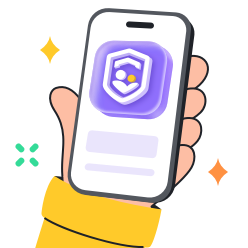Mathematics may seem a dry subject at first, but its understanding allows you to think logically and develop problem-solving skills. But the question is, how to develop interest among kids? If you’re having the same issue, don’t worry – there are many math activities for preschoolers that you can incorporate into your kids’ daily life to make learning fun.
So, keep reading this blog, as we’ll discuss various math activities of different themes in detail. Through such activities, kids not only develop number sense but also cultivate a love for math.
Benefits of math activities for preschoolers
Most students consider mathematics a dry subject because it is often characterized by a high volume of formulas and assumptions.
That’s why it would be best to add maths activities at the preschool age. This would make the learning fun and develop interest among kids as they grow. Let’s understand the benefits of math activities that your kids gain at their preschool age.
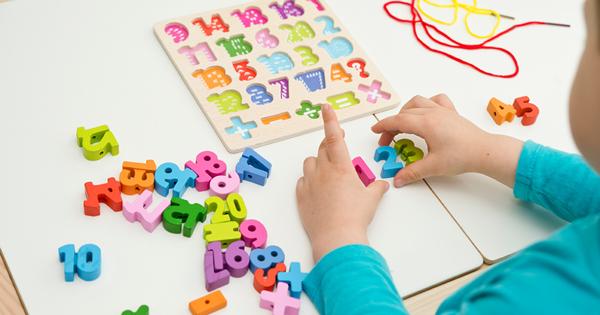


Cognitive development
The most important benefit of maths activities is that they would prove effective in improving your preschoolers’ cognitive development. This is because when your kids engage in activities like counting or identifying patterns, they are essentially exercising their brains to find a solution.
Social development
Furthermore, if kids participate in math activities in groups, they will essentially learn two important things: teamwork and sharing.
Such social skills in young kids develop good communication habits. Thus, as they grow, these skills help them interact with people around without hesitation.
Emotional development
Additionally, when they engage in math activities, they are essentially playing games, in which one player wins and the others lose. Thus, they would learn at the start how to handle their emotions, such as feeling proud of success, which boosts their self-esteem. Also, if they don’t do well, then instead of crying, they have to show patience and try again.
Engage their minds, brighten their day!
Core math concepts to teach preschoolers
Here are some activities that help children learn basic math concepts at an early age.
Counting and number recognition
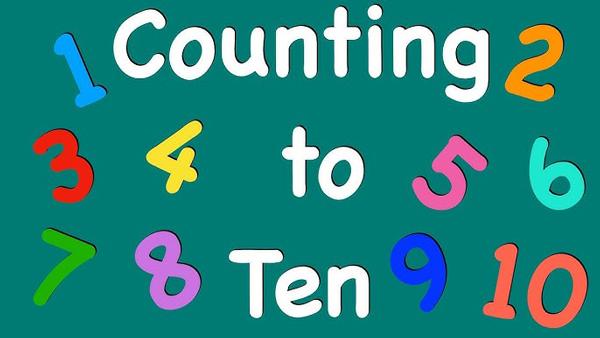


- Counting objects: If you want your kids to learn counting, consider giving them their favorite toys or puzzle blocks. Now, ask them to put a finger on one and say aloud one. Then, point out the next item and say ‘two’ and ‘soon.’
- Number hunt: Next, you can cut down the different cards and write counting 1-10 on each. Then hide such cards in your kids’ room and ask them to find them. As they found each card, ask them to read aloud.
- Snack count: Furthermore, the best thing is that you can even make your dining table a place to learn maths without letting kids, if it’s any learning activity. For instance, when you give your kids fruit slices, suppose 5, then ask the kids to count how many they have to finish.
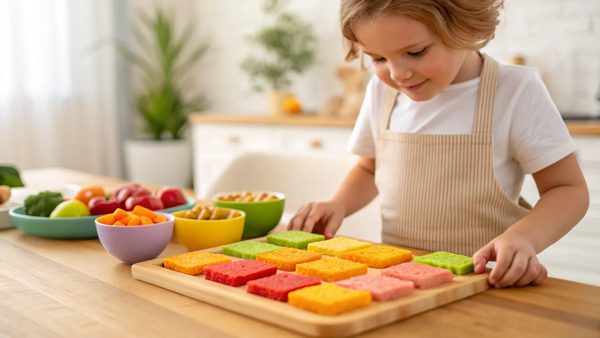


Shape recognition and geometry
- Shape sorting: To help kids identify the shapes, you can have some fun. Just as you can cut paper into different shapes, such as squares, triangles, and circles, you can spread all the pieces out on your kids’ table. Now, give your kids a task to combine similar shapes, apart as pile up all the squares and similarly the circles, and so on. By doing this, kids would even focus on minor details, such as which shape has how many corners, so that they may pile them together.
- Shape walk: Also, you can take your kids for a short walk, whether at home or in the neighborhood. Thus, in a way, you can point out different things, such as windows and car wheels, and ask kids what shape they are.
- Playdough shapes: You can also give your kids playdough and ask them to create different shapes from it, such as circles, triangles, and more. Once they have done it, then you have to ask what shape they have made.
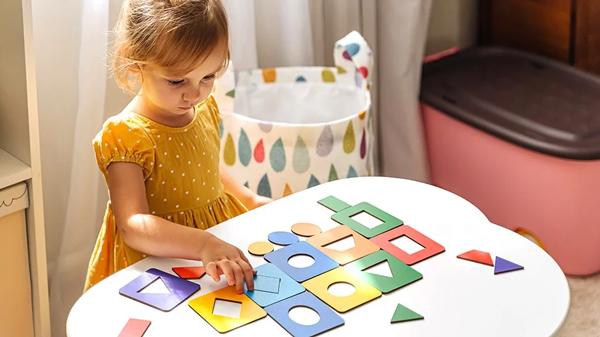


Patterns and sequencing
- Bead patterns: You will use beads of different colours, such as red or blue, and a thread. Next, you’ll put the beads in a sequence like blue-red-blue, then ask your kids to guess what colored bead would come next.
- Clap and tap: Furthermore, you can play a rhythm-type game with kids, where you first clap and then tap on the table. Now, ask your kids to do the same, and they will follow and remember the sequence.
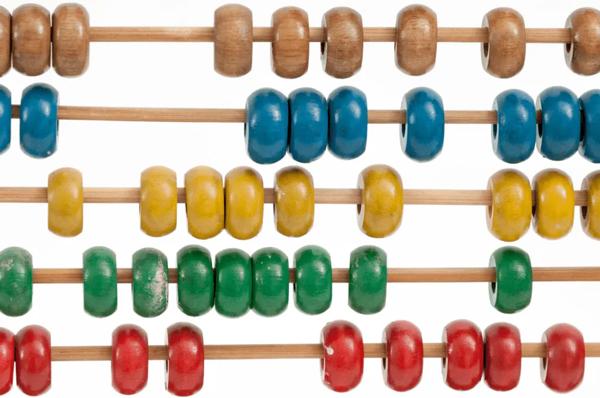


Measurement and comparison
- Height chart: You’ll take a chart and draw simple lines for each family member, labeling them according to their height. Now, you have to ask your kids to tell who is taller or shorter.
- Footsteps distance: Furthermore, you can also ask for help from other family members, such as asking each to walk through the room. And when each starts walking, count their footsteps aloud & not them down. Then, compare each, as if you have taken 12 steps and I have taken 8 steps.
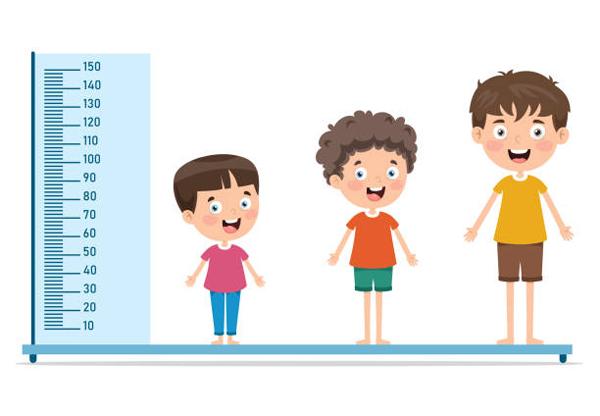


Thus, through this activity, kids would not only learn about comparison but also come to understand that anyone with bigger footprints would have fewer counts and vice versa.
Simple addition and subtraction (early concepts)
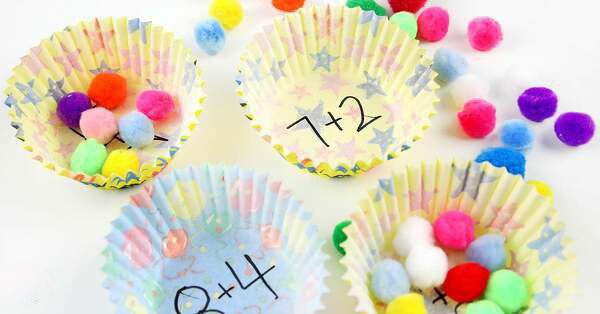


- Snack math: If you give your kids any fruits to eat, like mango slices. Then you can do something like this: first, put 3 in the plate and ask the kids to count how many are there. Then add 2 more and ask the kids now how many they become. Thus, they would learn basic addition concepts.
- Toy takeaway: Additionally, when teaching simple subtraction, you can help kids understand by giving them 5 toys and asking them to count. Then remove the 2 toys and again ask them to tell how many are left behind.
- Finger counting: Furthermore, you can hold up two fingers and tell kids we have two of these. Then raise 1 more finger and ask the kids to count now, how many? Similarly, you can do the same activity to learn subtraction by folding back the fingers.
Fun and simple math activities for preschoolers
Everyday object math fun
- Sorting Laundry: Once you’ve washed your clothes, take your kids along and ask them to sort the socks by color or size. Once they sort, then tell them to also count each pair.
- Kitchen Measuring: Additionally, allow your kids to scoop flour or fill cups as you name the amounts, such as “fill this full” or “fill this half,” etc.
Sensory bin math fun
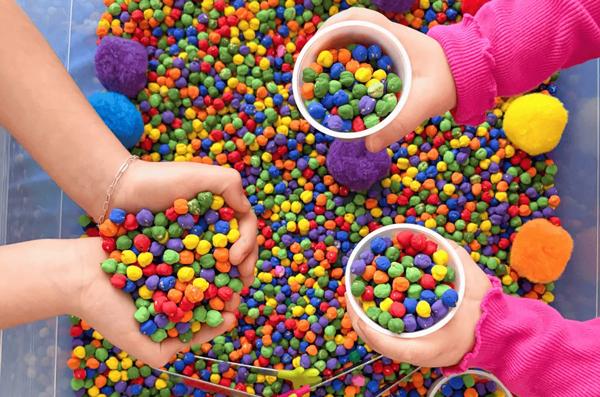


- Bean scoop and count: In this activity, you will need a bin of any shape and fill it with beans. Then you’ll give your kids spoons or cups and ask them to add scoops of beans into the cup. Additionally, the twist is that they must count how many scoops fill this cup.
- Hidden number hunt: Furthermore, you may have brought your kids a sensory bin. If so, then the task is to hide different blocked labels with numbers in them. Then ask your kids to dig in the bin and find the hidden block. As they find one, have them say aloud the number written on it.
Outdoor math adventures
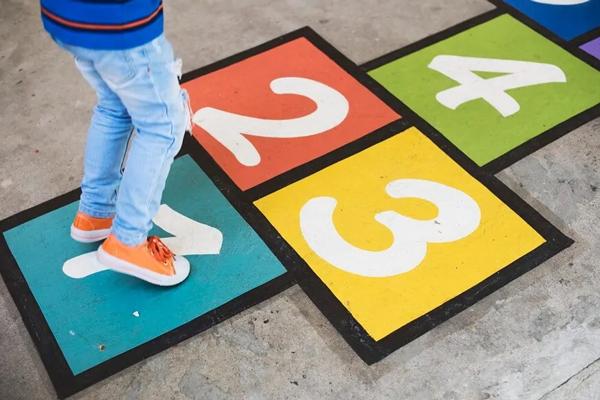


- Sidewalk shape hop: As we’re discussing outdoor math adventures, in this activity, you will take your kids outside, such as in your own backyard. Then, the task is to draw various shapes, such as squares, circles, and triangles, on the floor using chalk. Then, you’ll call out the name of any shape, and your kids will have to jump on it.
- Nature counting walk: In addition to teaching kids basic math, you, along with the kids, go outside and collect flowers, leaves, stones, and other natural items together. Once finished, count the total number of items both of you collected and determine which one has collected more.
Thematic and seasonal math activities for preschoolers
Winter math activities for preschoolers
- Snowball toss numbers: To do this activity, you’ll need almost 5-6 plastic cups and place them on the floor, label each with a number. Next, you’ll draw a line almost 5-6 feet away from the cups. Now, you’ll give your kids paper snowballs and say aloud one number, such as 4, and the kids have to hit the ball into the plastic cup labeled with that number.
- Mitten Match: Additionally, you’ll cut out the paper in the mitten/glove shape and create almost 20, approximately 10 pairs. Then, for each pair, write something, such as numbers or dots, to make them match. The task for kids is to separate the pairs with matching numbers.
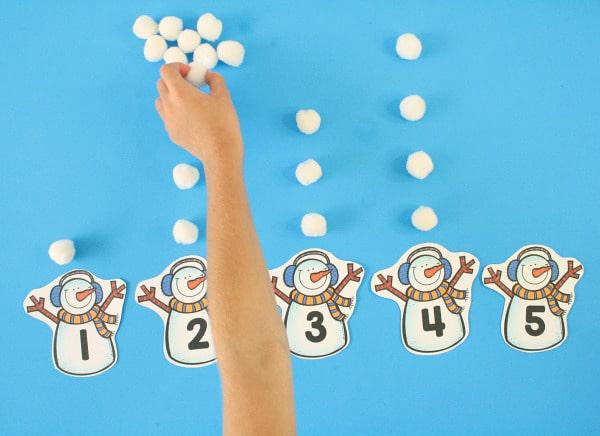


Fall math activities
- Pumpkin patch graph: You can also cut a piece of paper into 10-15 small pumpkins and color each one a different color, such as orange, yellow, green, etc. Now, hide all these pumpkins in your kids’ room and ask them to find them. Once you have found all the pumpkins, you will take a chat and draw a graph. Then ask the kids to place the pumpkins they collected in the matching column and see which color they have collected more of.
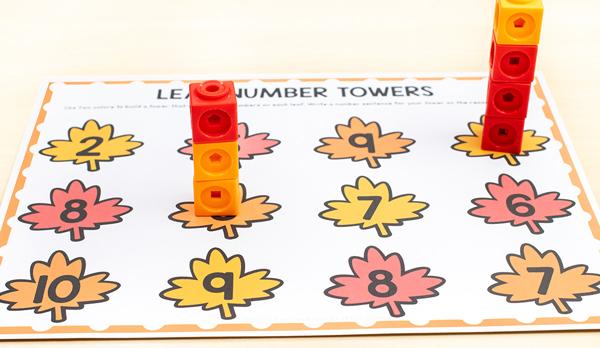


Spring math activities
- Flower Shop Math: In this activity, you’ll pretend to have a flower shop, which you can do by placing artificial (paper) flowers or real ones in the basket. Label each bouquet by the price: 1, 2, and 3 coins. Now, ask kids to buy them by giving you the correct amount, by seeing what is tagged on the flowers.
- Raindrop match game: Furthermore, here, basically, you’ll need a paper that you’ll cut to create raindrops, and also ask kids to colour them blue. Also, mark each piece with numbers. Then, take a large piece of paper and draw different clouds on it, numbering them as you go. Now, the maths twist is to ask kids to place the raindrop below the cloud with the same numbers.
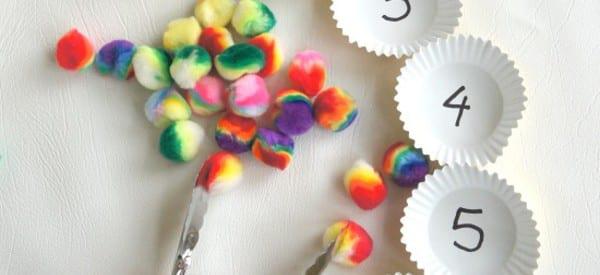


Halloween math activities
- Jack-o’-Lantern beanbag toss: Talking about Halloween math activities, you can draw a big jack-o’-lantern face on the cardboard. Next, you’ll cut out the mouth to create the target hole and also mark the numbers, such as 1, 2, and 3, alongside. Now, kids would have to do like target the number that you call.
- Monster march counting parade: Moreover, in this Halloween-themed game, you’ll ask kids to wear a Halloween mask or dress up like that. Then you’ll turn off the lights & play the music, and take three steps forward. So, kids will follow your instructions and do the same.
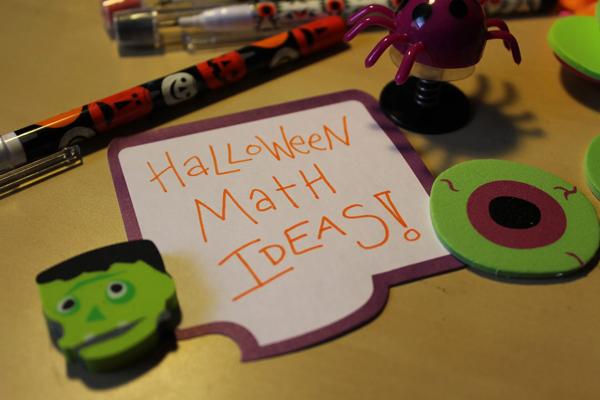


Recycling math activities
- Recycle relay count: In this recycling math activity, you’ll collect recyclable items, such as plastic caps and aluminum cans, and scatter them on one side. Also, place three bins labeled with numbers 1,2, and 3 on the front. Now ask your kids to pick one scattered item, such as an aluminum can, and throw it into the bin you’ve labeled #3, and so on.
- Bottle-cap number line: Here, you’ll collect 10-15 bottle caps and label each with numbers, such as 1, 2, or you can write expressions like 2+3, etc. Then, draw a line on the floor with chalk and ask your kids to place the caps in sequence along the line. You can make it interesting by calling out the numbers, and the kids have to place that cap on the line.
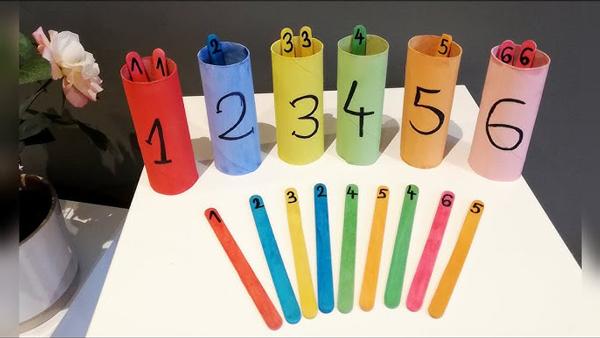


Health and body math activities
- Jump & count fitness game: To do this math activity, you’ll place a mat on the floor. Now, the kids will jump or frog hop and give the condition to count the numbers aloud.
- Heartbeat counting: Moreover, tell your kids that when we do exercise or a heavy task, our heartbeat rate increases. So, let’s count it all. For instance, ask them to place two fingers on their wrist or chest. Then start the timer and, alongside the kids, count aloud the heartbeats in one minute. Once counted, multiply it by 4 and then compare it with the previous one.
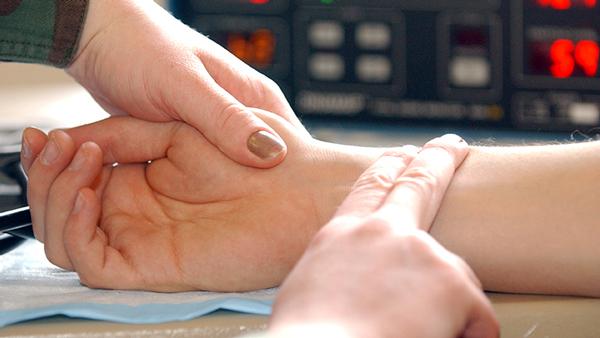


All about me math activities
- Birthday graph: You need to draw a large poster on the wall and write the birthday months at the bottom. Ask your kids to add a picture, sticker, etc, on their birthday month block. Also, add the birthdays of other family members and ask them to count how many birthdays fall in one month.
- Favorite things tally: Next, you’ll make a fun category of favourite fruit, color, toy, etc. Then ask the family members to tell their favourites. Now help your kids keep track of answers by adding a tally mark on each category, and at the end, count which item is the most popular.
Math activities for preschoolers using a folder
- Number pocket folder: Take a sturdy file folder and create pockets inside, each labeled with a corresponding number. Now ask your kids to put the buttons or any other item into the pocket according to the number. Place 1 item in the pocket labeled 1, 2 items in the pocket labeled 2, and so on.
Tips for parents of preschoolers
If you are a parent, then you can make maths fun at home before even sending your kids to school. And don’t worry, you don’t need to spend any money on resources. You can transform your daily activities into learning activities.
- Play through learning: It’s a fact that all of you bring toys for kids to play with, right? However, it would be best to bring board games or dice; thus, along with having fun, they would also learn basic math skills, such as recognizing numbers.
- Read math-friendly books: Furthermore, it’s advisable to pick the picture books that have counting, patterns, or shapes. For instance, you can go for the Ten Black Dots by Donald Crews or Mouse Count by Ellen Stoll Walsh, etc. Then read together with kids, making maths storytelling rather than a lesson.
- Use simple tools and apps: Lastly, today’s kids, being digital natives, enjoy playing games on mobile phones. As a parent, one thing you can do is transform their fun into learning by allowing them to play math-based games designed for preschoolers.



Conclusion
In short, math activities for preschoolers are the best way to make maths fun for kids at an early age. Now there are a lot of options that you can add to your kids’ daily routine and develop a love for maths. Additionally, you can also allow children to play math-based games on their devices under your supervision.

